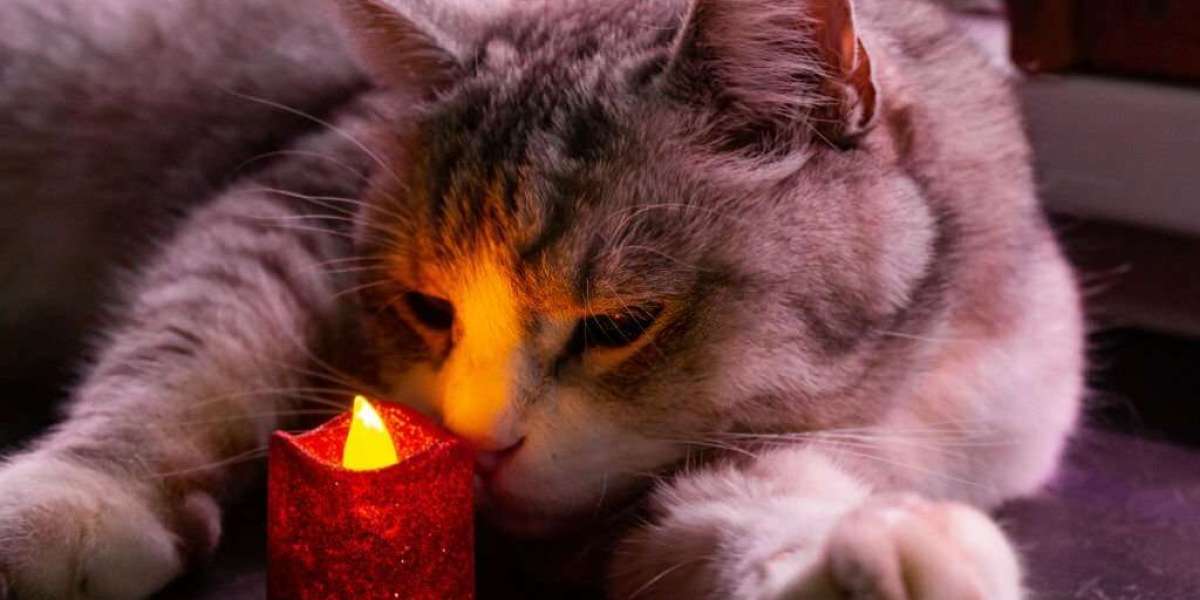Cats are known for their keen senses, and their ability to see in low light is one of their remarkable features. As many cat owners enjoy the cozy ambiance of candlelight, a common question arises: Can cats see candles? In this article, we'll delve into the feline visual system and explore whether our furry companions can truly appreciate the warm glow of a candle.
Feline Vision:
To understand how cats perceive candles, we must first explore their visual capabilities. Cats are crepuscular animals, meaning they are most active during dawn and dusk when the light is low. Their eyes are adapted to function effectively in low-light conditions, thanks to several key features.
Tapetum Lucidum: Cats possess a reflective layer behind their retinas called the tapetum lucidum. This layer enhances their vision in low light by reflecting light that passes through the retina back into the eye. This boosts the sensitivity of their eyes and allows them to see better in dimly lit environments.
Rod Cells: Cats have a higher number of rod cells in their retinas compared to humans. Rod cells are responsible for detecting light and movement and are particularly effective in low-light conditions. This abundance of rod cells contributes to a cat's ability to see well in the dark.
Pupil Adaptation: The slit-shaped pupils of cats can dilate widely, allowing more light to enter the eye in low-light situations. This adaptive feature aids cats in adjusting to varying light levels quickly.
Candlelight and Cat Vision:
Now, let's consider how cats perceive candlelight. Candles emit a warm, flickering glow that creates a serene atmosphere. While cats may not appreciate the aesthetic beauty of candles in the same way humans do, they can certainly detect and respond to the changes in lighting.
The flickering flame of a candle may catch a cat's attention due to its movement and contrast against the surrounding darkness. Cats are naturally curious, and the dancing flame could trigger their predatory instincts, making the candle a source of fascination.
However, it's important to note that cats do not perceive colors in the same way humans do. Their vision is more attuned to shades of blue and green, and they may not discern the full spectrum of colors present in a candle's flame.
Safety Considerations:
While cats may find candles intriguing, it's crucial to prioritize their safety. Cats are agile and curious creatures, and an open flame can pose risks. Here are some safety tips for cat owners who enjoy candlelight:
Supervision: Never leave a burning candle unattended, especially if you have a cat in the vicinity.
Secure Candles: Place candles in secure holders to prevent accidental knock-overs by playful feline paws.
Choose Safe Locations: Keep candles in areas that are inaccessible to cats, such as high shelves or enclosed spaces.
Consider Alternatives: Opt for flameless LED candles to create a similar ambiance without the fire hazard.
Conclusion:
In conclusion, cats can perceive candles, and the flickering flame may capture their attention. However, their appreciation for the warm glow is likely different from our own. As responsible cat owners, it's essential to balance our desire for a cozy atmosphere with the safety of our feline friends. Whether you choose traditional candles or safer alternatives, creating a cat-friendly environment ensures that both you and your furry companion can enjoy a warm and inviting space.









